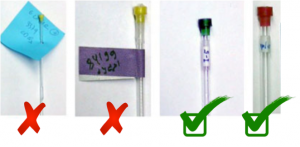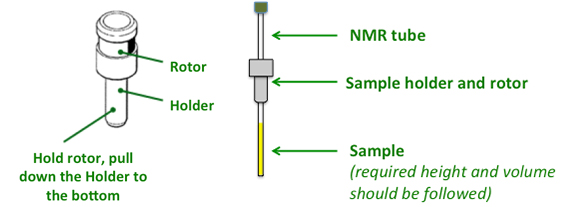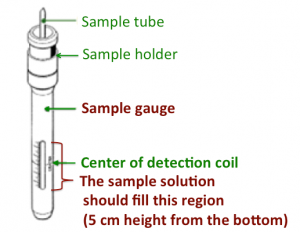Can I observe during the NMR analysis?
Yes. We can accommodate 1-2 observers. Please coordinate with us for the gate pass and schedule.
Is your NMR equipped with auto-sampler?
Yes. The NMR is equipped with an auto sampler and can hold up to 24 samples. It can be programmed for continuous analysis.
Do you offer rush analysis?
Yes. Rush analysis is available for twice the published rate. Please contact us for rush analysis at [email protected].
Do you process the spectra after the analysis?
Yes. We process the spectra and do integrations and expansions as we see fit. We send a pdf of the processed data through your e-mail. You can request for more detailed integrations and expansions.
Do you interpret the spectra after the analysis?
No. We don’t provide spectra interpretation.
Can you provide the ASCII data of the spectra after the analysis?
Yes. ASCII files, which can be inputted in Excel, can be requested and be sent to your e-mail for free.
Do you give the raw data after the analysis?
Yes. We can send the raw data (jdf file) through your e-mail. This requires a JEOL DeltaTM software to be processed. A free trial version is available for download. Please visit the JEOL website for details: https://www.jeol.co.jp/en/products/detail/Delta5.html
How long will you store the NMR results?
Results will only be retained for a period of 1 year after the date of analysis. All data will be deleted after the retention period.
Will you inform the clients before deleting their NMR data after the retention period?
No. It is the responsibility of the client to ask for additional copies of the data during the retention period.
Do you have lab space for lab works prior to NMR analysis?
Yes. For cases where laboratory space is required to do prior work (e.g. doing a reaction set-up for NMR monitoring of reaction), separate fees are required for the use of the lab and equipment. Please contact us for details at [email protected].
Do you offer block time usage?
Yes. We offer block time usage for NMR analysis at a discounted rate. Block time usage is offered to academic principal investigators/research groups by “blocking” the NMR time for their sample analysis after depositing a specific amount. Please contact us for details at [email protected].
Do you offer discounted rates for students?
Yes. Discounted rates are offered for accounts/research groups who signed a block-time usage with us. For more details, please contact us at [email protected].
Do you offer training for NMR usage?
Yes. Training for NMR usage is available. It is free for up to 5 persons for research groups with a block-time contract with us. Otherwise training is offered for a fee. Please contact us for details at [email protected].
Do you provide certification after NMR training?
Yes. Certificates can be requested after lecture type NMR training session. Certifications for the actual use of NMR require additional hands-on operation, monitored evaluation and examinations. As of the moment, these trainings are not yet qualified for CPD units.
Your contact information is not working, is there an alternative e-mail?
Contact us at these alternative e-mails: [email protected] , [email protected] , [email protected] or https://facebook.com/DLSUNMRLab/
Can we visit the NMR facility anytime?
As a university policy, all visitors should have a proper host inside the university while visiting. We require prior information before going to the DLSU Laguna Campus such as the full names of the visitors, date and time of the visit, car information such as the color, make and plate number.
Do you have parking space at DLSU Laguna?
Yes, parking spaces are available at DLSU Laguna. Please coordinate with us before coming for the gate pass. We need information such as the full names of the visitors, date and time of the visit, car information such as the color, make and plate number.
How can we go to DLSU Laguna?
For directions, you can use the Google Maps app or the Waze app and input “DLSU NMR Laboratory”.
From Manila by car, use the SLEX, exit at Sta. Rosa (or Eton), proceed to Paseo de Sta Rosa. At the intersection of Sta. Rosa-Tagaytay Road and Laguna Blvd, proceed to Laguna Blvd going to Laguna Technopark. Alternatively, you can exit at Mamplasan, and take the CALAX and exit at Laguna Technopark, then U-trun towards Laguna Technopark gate 2. After Laguna Technopark Gate 2, continue straight until you see a DLSU star signage (on the right). Turn left and pass under the CALAX road and continue straight until the rotunda. DLSU Laguna gate is at the second exit.
From Manila by public transportation. Take a bus going to Sta. Rosa. Get off after the Sta. Rosa exit toll gate. Take a tricyle going to Shopwise Paseo de Sta. Rosa. Hail a tricyle for a special trip to DLSU Laguna.
Do you have accommodation at DLSU Laguna for overnight stay?
There is a dormitory on campus that accepts transient stay. Please contact us for details at [email protected].





